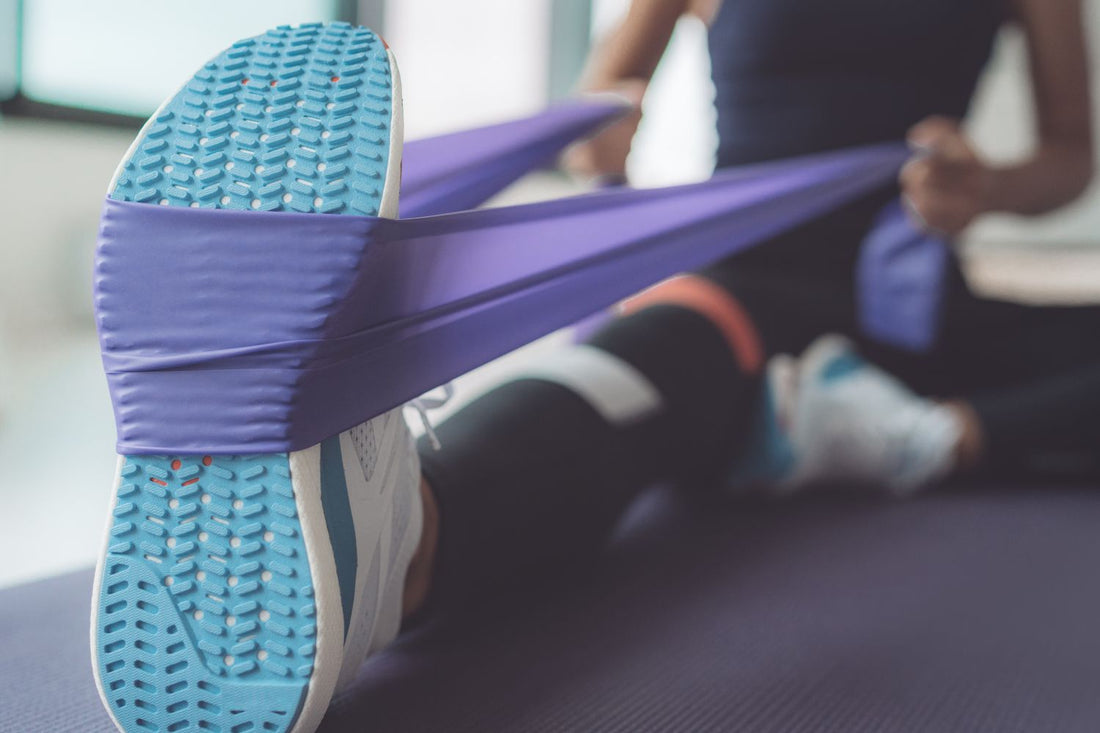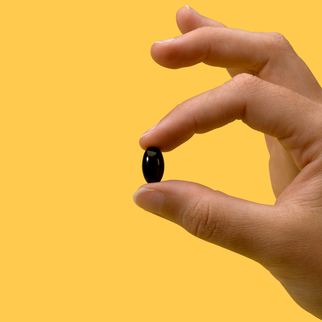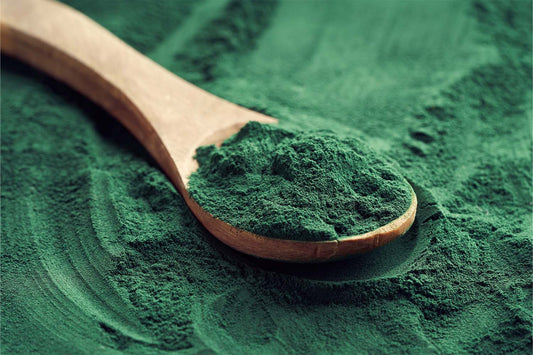Resistance training is a form of physical activity that builds strength, improves overall health, and can help you feel more confident in your skin.
In this comprehensive guide, we'll tell you everything you need to know about resistance training, how to do it at home, and how iwi life can support you on this journey.
What Is Resistance Training?
Resistance training, also known as strength training, is a form of exercise that improves muscular strength and endurance. During resistance training, your muscles work against a force that resists their movement. This force can come from your own body weight, free weights, or weight machines.
Resistance training targets specific muscle groups, helping you build muscle mass and tone your body. It's different from other forms of exercise like aerobic exercise, which primarily improves cardiovascular health, or flexibility training, which enhances joint mobility. Ideally, you should create a comprehensive workout routine that features elements from all three types of exercise.
How Does Resistance Training Work?
Resistance training works by applying an external force that the muscles have to work against. This type of resistance could be in the form of weights, resistance bands, or even your body weight. When your muscles contract against whichever form of resistance you choose, it causes tiny micro-tears in the muscle fibers. This may sound alarming, but it's actually a crucial part of the muscle-building process.
When you rest after a workout, your body gets to work repairing these micro-tears. It does this by fusing muscle fibers together to form new muscle protein strands (myofibrils). These repaired myofibrils increase in thickness and number to create muscle hypertrophy (growth). Simply put, strenuous exercise like resistance training breaks down your muscles, and then your body rebuilds them stronger and larger.
What Are the Health Benefits of Resistance Training?
Resistance training is not just about building muscle and strength. It offers a wide range of health benefits that contribute to overall wellness:
- Muscle strength: One of the most immediate benefits of resistance training is improved muscular strength. This can make everyday activities, from carrying groceries to climbing stairs, much easier and enhance your overall quality of life.
- Bone health: Resistance training is excellent for your bones too. It stimulates the growth of new bone tissue, increasing bone density. This is particularly beneficial for older adults, as it can help prevent osteoporosis and related fractures.
- Body composition: Resistance training can significantly improve your body composition by reducing body fat and increasing lean muscle mass. This can lead to improvements in physical appearance, self-esteem, and overall health.
- Heart health: While often overlooked, resistance training is great for your heart. Studies have shown that it can help lower blood pressure, reduce bad cholesterol levels, and increase good cholesterol levels, which can all help lower your risk of heart disease.
- Weight loss: Resistance training boosts your metabolic rate, meaning you burn more calories even when you're not exercising. Combined with a healthy, balanced diet rich in whole foods, it can be a powerful tool for weight loss.
- Mental health: Resistance training has been linked to improved mental health as it can help alleviate symptoms of depression and anxiety, improve mood, and boost overall well-being. This is likely due to the release of endorphins, often referred to as "feel-good hormones," during exercise.
What Equipment Do You Need for Home Resistance Training?
When it comes to home resistance training, there are several key pieces of equipment that can help you get the most out of your workouts:
- Resistance bands: These are stretchy bands that provide resistance when pulled. Plus, they're lightweight and portable, making them perfect for home workouts or even for taking on the go.
- Dumbbells: Dumbbells are free weights that can be used in a wide variety of exercises to build muscle. They come in various weights, allowing you to adjust the resistance level as needed.
- Kettlebells: Kettlebells are highly versatile compact weights with a handle. They're ideal for functional fitness workouts that aim to improve both strength and flexibility.
- Medicine ball: A medicine ball is a weighted ball that can be used for a variety of exercises to improve core strength and balance.
What Are the Best Resistance Training Exercises To Perform at Home?
In the world of resistance training, variety is key. Here are some of the best exercises you can do from the comfort of your home:
Push-Ups (Bodyweight)
Push-ups are a staple exercise that works your arms and core, and they’re easy to do anywhere. Here’s how:
- Start in a high plank position with your hands directly under your shoulders.
- Lower your body until your chest is just above the floor.
- Push your body back up to the starting position. Repeat.
Lunges (Bodyweight)
Lunges are a great way to work your glutes and hamstrings. To perform lunges, follow these steps:
- Stand upright with your feet hip-width apart.
- Step forward with one foot and lower your body until your front knee is at a 90-degree angle.
- Push back up to the starting position, then switch legs. Repeat.
Planks (Bodyweight)
Planks are excellent for engaging your entire body, including your core, arms, and glutes. Here’s how to do a plank:
- Start in a forearm plank position, with your elbows directly under your shoulders and your body in a straight line from head to feet.
- Hold this position, keeping your core engaged.
Band Pull Apart (Resistance Band)
Band pull aparts are low-impact, and they work the muscles in your arms. Here’s a walkthrough:
- Hold a resistance band with both hands at chest level, arms fully extended.
- Pull the band apart by moving your hands outward and squeezing your shoulder blades together.
- Slowly return to the starting position. Repeat.
Bicep Curls (Resistance Band)
Bicep curls are a great way to build stronger bicep muscles, and they’re pretty simple to perform. Here’s a step-by-step:
- Stand on the center of a resistance band. Hold the ends with your palms facing forward.
- Curl your hands towards your shoulders, keeping your upper arms stationary.
- Slowly return to the starting position. Repeat.
Deadlift (Dumbbell)
Deadlifts can help you strengthen your glutes, core, and arm muscles. Follow these steps:
- Stand with a dumbbell in each hand, feet shoulder-width apart.
- Bend at your waist and knees, lowering the weights towards the floor while keeping your back straight.
- Push through your heels to return to the starting position. Repeat.
Goblet Squat (Kettlebell)
Goblet squats work your glutes primarily, but they can also help you build a stronger core and stronger arms. Here’s how to do them:
- Stand with feet hip-width apart, holding a kettlebell by the handles close to your chest.
- Lower your body into a squat position, keeping your back straight and the kettlebell close to your body.
- Push through your heels to return to the starting position. Repeat.
Medicine Ball Slams (Medicine Ball)
Medicine ball slams are a great way to build up your core and arm muscles. Here’s how to do them:
- Stand with feet shoulder-width apart, holding a medicine ball overhead.
- Slam the ball down onto the ground as hard as you can, bending at the waist and knees.
- Pick up the ball and repeat.
What Are Some Safety Tips for Resistance Training at Home?
Proper form and technique should be a top priority during your resistance training to lower the risk of injury. This includes maintaining a stable posture, controlling your movements, and using appropriate weights.
Warming up before your weight training and cooling down afterward are crucial steps for better performance and recovery. A warm-up can include light cardio and dynamic stretches, while a cool-down may consist of static stretching and relaxation exercises.
Rest and recovery are integral to prevent overtraining. This means giving your muscles time to repair and strengthen between training sessions. Rest days are just as important as workout days in your fitness journey.
Hydration and nutrition also play a significant role in fueling your body for resistance training. Drinking plenty of water and consuming a balanced diet rich in protein, carbohydrates, and healthy fats can provide the energy you need for your workouts.
Consulting with a personal trainer can give you personalized advice tailored to your specific needs and goals. They can help ensure your training program is safe, effective, and aligned with your objectives.
The Takeaway
Resistance training at home offers a wealth of benefits, from improved muscle strength and bone health to better body composition and enhanced mental well-being. With the right equipment and a commitment to regular workouts, you can reap these benefits and work towards your health and wellness goals.
However, remember that effective resistance training isn't just about the workouts. Proper nutrition is equally important, and that's where iwi life's plant-based omega-3 supplements can play a crucial role. By supporting muscle recovery and growth, and providing essential nutrients, our supplements can help enhance the results of your resistance training routine.
So, are you ready to embark on your home resistance training journey? Consider adding iwi life's omega-3 supplements to your routine. With their support, you can maximize your workouts, speed up recovery, and make strides toward your health goals, all while contributing to a more sustainable future.
Sources
Stunning Images Show How Muscles Heal Themselves After a Workout | Live Science
Effects of Resistance Exercise on Bone Health | PMC
Associations of Resistance Exercise with Cardiovascular Disease Morbidity and Mortality | PMC
Association of Efficacy of Resistance Exercise Training With Depressive Symptoms | PMC



















